Every Harry Potter Movie Ranked From Worst to Best
- Oops!Something went wrong.Please try again later.
- Oops!Something went wrong.Please try again later.
The post Every Harry Potter Movie Ranked From Worst to Best appeared first on Consequence.
This feature originally ran in November 2018.
Welcome to Dissected, where we disassemble a band’s catalog, a director’s filmography, or some other critical pop-culture collection in the abstract. It’s exact science by way of a few beers. This time, we sort through the best and worst of the still-expanding Wizarding World cinematic universe.
A viewer of a certain age will remember what the run-up to the release of 2000’s Harry Potter and the Sorcerer’s Stone felt like. Just a couple of years earlier, the Boy Who Lived arrived on American shores with a slightly altered first installment title and the many wonders of J.K. Rowling’s wizarding world in tow. Potter phenomenon was already well underway, but the idea of being able to bring Hogwarts and its inhabitants to life set the excitement at a fever pitch. Everything from the gentle John Williams score to the first images of Daniel Radcliffe as the onscreen Harry suggested that fan expectations were about to be delivered upon.
Whether they were or not from that point is really a matter of perspective. To some Potter-heads, the films can never truly match the richness and depth of Rowling’s ever-expanding universe. To others, they’re to be taken as their own version of the Potter story, adaptations comprehensive enough to work (or not work) as their own retelling, independent of the books. Others got to grow along with the series, watching its actors age onscreen as the characters did on the page, growing up as Harry and Ron and Hermione had to as the story progressed. To many, at least these days, they’re the eight movies always playing on some cable channel somewhere.
Regardless, 18 years and billions of dollars later, the Potter books have spawned eight adaptations, two spin-offs (the Fantastic Beasts films), and a lifetime of book vs. movie arguments. As Fantastic Beasts: The Crimes of Grindelwald apparates into theaters around the world, we’ve decided to take our best shot at dissecting the magic of those ten films, what makes them tick, and which manage to best match (or even add to) the story that created a new generation of dedicated readers and fans. Accio ranked list!
(A quick note, before we begin: the “Cast” section for each main series entry, after the first, will only include additions per film, to avoid re-naming a who’s-who of European acting royalty along the way.)
— Dominick Suzanne-Mayer
10. Harry Potter and the Chamber of Secrets (2002)
Runtime: 2 hrs. 54 min.; one of the shortest books gets the longest film in the series.
Cast: Daniel Radcliffe, Emma Watson, Rupert Grint, Alan Rickman, Robbie Coltrane, Maggie Smith, Warwick Davis, Tom Felton, Richard Griffiths, David Bradley, Matthew Lewis, and the many, many others within the walls of Hogwarts and beyond. The three big names joining the festivities are Jason Isaacs as Lucius Malfoy, the ever-underrated Shirley Henderson as Moaning Myrtle, and Kenneth Branagh as fraudulent dreamboat Gilderoy Lockhart. It’s also Richard Harris’ last appearance as Dumbledore — he died shortly before the film’s release.
Revelio Premise: Harry may know he’s a wizard now, but that doesn’t mean his home life is one bit better. Confined to his room and prevented from doing magic by the laws of the wizarding world, Harry’s bad situation gets even worse when a house elf named Dobby shows up to warn him against going back to Hogwarts. He goes again, of course, but when someone or something begins attacking “Muggle-borns” — wizard kids born to non-magic parents — and he’s suspected, his previously wonderful school life becomes more hostile and somehow even more dangerous. Who’s behind it, they can’t tell, but the titular chamber seems to hold the answers.
Artistic Pedigree: You’ll read more about director Chris Columbus in the Sorcerer’s Stone section (hint: you won’t have long to wait there). While his efforts to bring the films to the screen are laudable, and his obvious respect for the material endearing, the director of Stepmom was not perhaps the best choice to bring a story of a kid who experiences almost unending loss, pain, scrutiny, and cruelty to the screen. He’s good on fuzzy moments, not so much on layered, messy, emotional stuff.
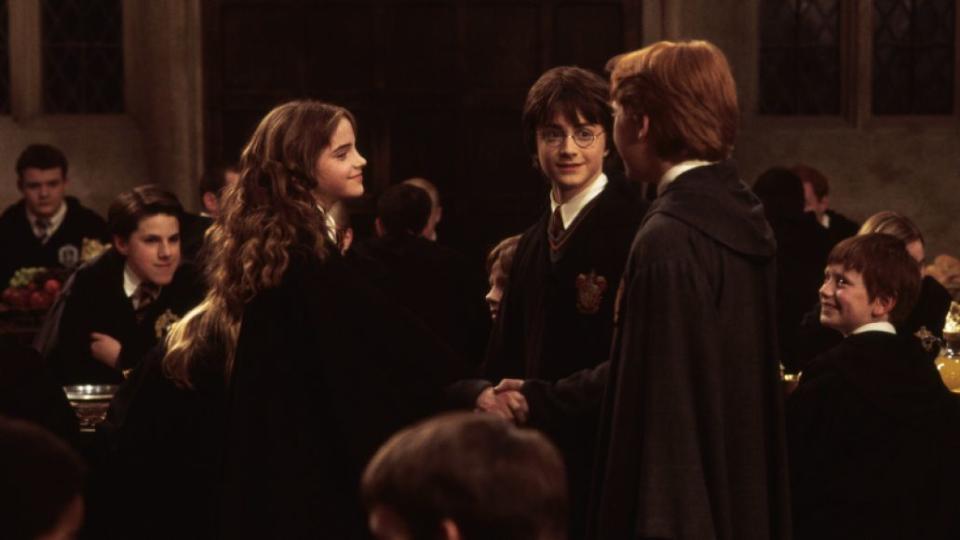
Harry Potter and the Chamber of Secrets
Put a Spell on You: When Harry and Ron make their way to the Chamber of Secrets — and more specifically, when Harry goes on alone — there’s suddenly some legit atmosphere. That’s thanks in no small part to Christian Coulson, who was unfortunately too old to return as Tom Riddle in later films. Here, he’s absolutely chilling, displaying a palpable intelligence that makes the young Voldemort seem every bit as formidable as the one we’d later meet in the form of Ralph Fiennes. The crazy cave and giant snake ain’t bad, either.
I cannot state this plainly enough, this children’s movie is six minutes shy of three hours long, that is absolutely bonkers, what the hell: And yet it still feels rushed. Interminable, and yet rushed.
Five-time Winner of Witch Weekly’s Most Charming Smile Award: The adult actors in the Potter series are not to be fucked with. For the most part, they don’t phone it in — Dame Maggie Smith would never — but even in that crowded field, Kenneth Branagh’s giddy commitment to being just the fucking worst is something to marvel at. Reportedly, Hugh Grant was the first in line for this job, and while the future-and-forever Phoenix Buchanan would play a number of self-obsessed cads to great effect throughout his career, it’s impossible to imagine this film without Branagh’s glinting teeth and feckless scrambling. He’s perfect.
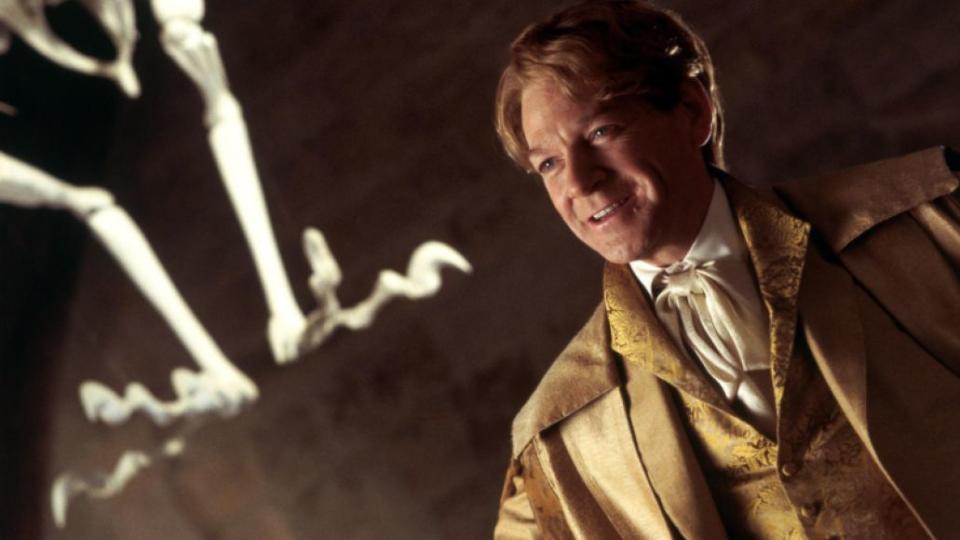
Kenneth Branagh in Harry Potter and the Chamber of Secrets
Expecto Verdict: Allow me to just say this one thing about Chris Columbus — who, again, seems to genuinely love these books, bless him. In the Potter books, the Sorting Hat is, of course, capable of singing a yearly song to outline the qualities of each of the Hogwarts houses through a rip in its brim. However, it’s also capable of whispering directly into the ear (or brain) of the student who wears it, while it reads what exists in that student’s mind (and thus heart). Chris Columbus imagines those conversations as the hat bellowing out its thoughts for all to hear. It’s not intimate. It’s public. It’s about observation, not essence. It shows us the most literal version of what happens, without thinking about how it feels, or what it means.
That’s the Chris Columbus take on the Potter world in microcosm. The most faithful adaptation by far is also, in turn, the least magical. That precedent would be broken with the very next film in the series, but we’ll always wonder what a director with more imagination — more magic — might have done with Harry’s first two years at Hogwarts. — Allison Shoemaker
09. Fantastic Beasts: The Crimes of Grindelwald (2018)
Runtime: 2 hrs. 13 min.
Cast: The Fantastic Beasts gang, plus Zoë Kravitz, Callum Turner, Derek Riddell, Claudia Kim, William Nadylam, Fiona Glascott, Brontis Jodorowsky, and approximately 90 seconds of Jessica Williams. Oh, and Jude Law as Albus Dumbledore.
Revelio Premise: In the closing moments of Fantastic Beasts and Where to Find Them, Gellert Grindelwald (less Colin Farrell’s face and plus Johnny Depp’s bleached eyebrows) was imprisoned following the apparent death of Credence Barebone (Ezra Miller), a wizard whose repressed magical abilities transformed into a dark force called an Obscurus (one of the most tragic and timely of J.K. Rowling’s inventions). Naturally, the sequel hinges on both those things being undone in the film’s earliest moments. With Grindelwald free and pursuing the troubled young man, Albus Dumbledore enlists the help of Newt Scamander (Eddie Redmayne), whose gentleness and disinterest in power makes him one of the only people suited to seeking Credence. Not an easy task in any circumstance, but his personal life, not to mention the chaos Grindelwald creates, seems unlikely to make things any simpler.
Artistic Pedigree: Jude Law’s no joke. Neither is Zoë Kravitz. The Potter films have never had trouble attracting top-notch actors (presumably gobs of Galleons are involved), and that trend continues here. Other than that, not much to report.
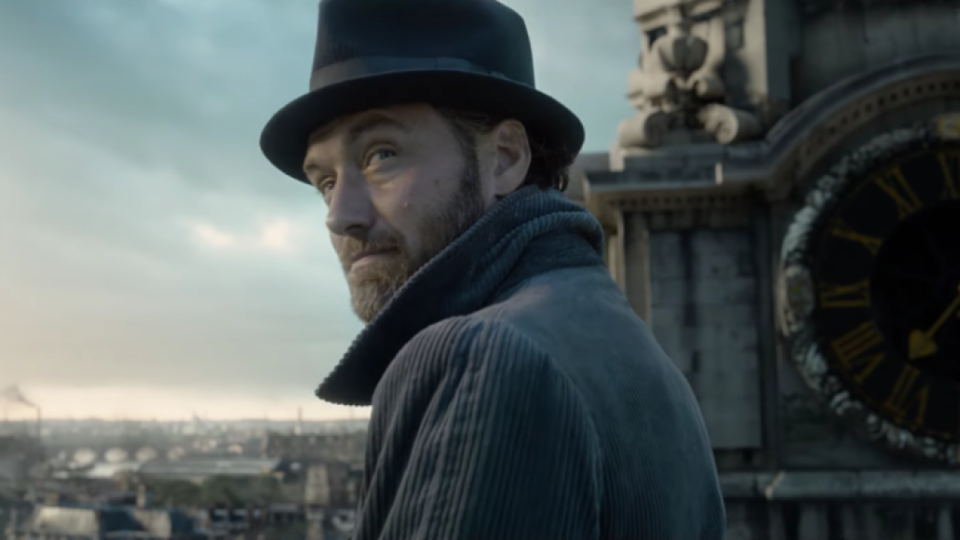
Jude Law as Dumbledore in Fantastic Beasts: The Crimes of Grindelwald
Put a Spell on You: We get our first glimpse of Newt’s home, and as you’d guess, it’s got as much space for his titular fantastic beasts as his handy-dandy suitcase. There are more spectacular effects and a few solid set-piece battles, but the most magical-feeling moment in this too-long film is just Newt tending to a kelpie in his, ah, water-basement.
The Life and Lies of Jude Law playing Albus Dumbledore: For all the talk about Jude Law joining the Wizarding World by playing the younger version of one of its most important figures — including quite a lot of discussion of Dumbledore’s butt — he’s just not in this movie very much. It’s not a Jessica Williams-level offense, and he certainly looms large over the plot, but most of his scenes are brief, and the best is undeniably the first (which is playful and engaging in a way the film rarely achieves otherwise).
No, for all Law’s talents and the obvious skill on display here, Dumbledore is mostly here to be Important, and so that he’ll be in the forefront of one’s mind when Rowling goes on a retconning extravaganza. There’s not much else we can say about that until more people have seen the film, but this Dumbledore isn’t a character. He’s an event, and a plot point, and a signpost, and a butt. There’s not much else.
Confundo Politica: The first Fantastic Beasts can be understood on two levels. In one sense, it’s a prequel-spinoff of sorts, an excuse to explore unknown corners and characters of Rowling’s world (and to make gads of Galleons for all involved). In another sense, it’s a fierce argument for protecting the creatures of the world, for beholding a snarling animal and seeing not its danger, but its fear.
Even more potently, it’s a look at the damage that can be done to a person taught to hate what they are by those charged with their care, and the violence that can occur when a person is told, over and over again, that they’re dirty, or despised, or worthless. It’s thoughtful and effective.
Those were the days. Again, there’s not much that can be said without spoiling the plot, but Rowling’s desire to see things from all sides means that the white-blond dark wizard who desires purity and power for the wizarding race and comes to prominence in the age of Adolf Hitler — never one of Rowling’s more subtle parallels — is suddenly making arguments and attracting people in a way that simply doesn’t make sense within Rowling’s earlier stories.
Add in some waffling about whether or not Dumbledore’s sexual orientation (revealed by the author after the Harry Potter series ended) would matter to the series and you’ve got… not a film that can be seen as both a pure yarn and a potent allegory, but a mess that has no idea what it’s saying.
Also, Johnny Depp is in it.
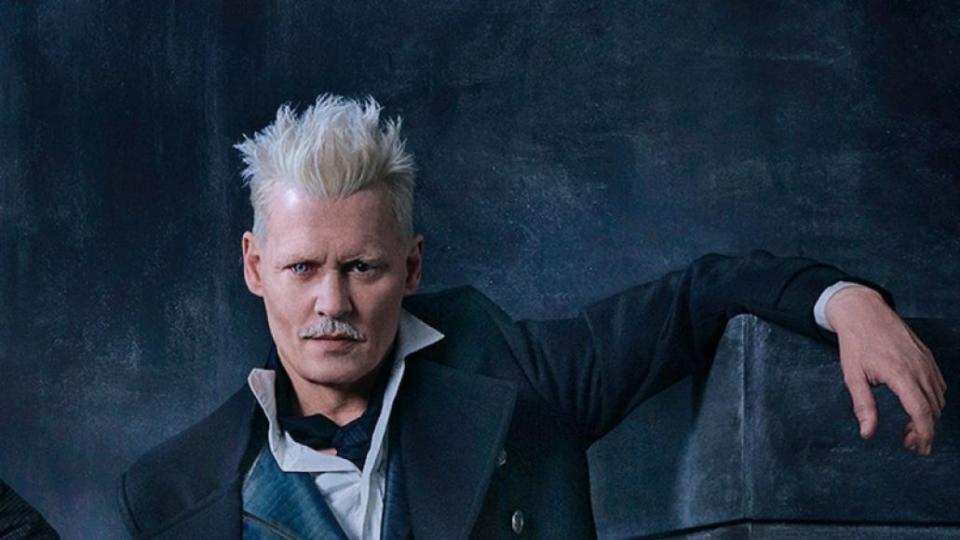
Johnny Depp in Fantastic Beasts: The Crimes of Grindelwald
Expecto Verdict: In the Potter books, the people were complicated, and so the story was, too, but many of the themes and ideas — ”what is right, and what is easy;” the importance of standing up to oppose a wrong; the fact that people on the “right” side can be cruel and violent, too; the notion that even heroes are fallible, and that power corrupts — were crystal clear. In Grindelwald, the ideas are murky and the characters don’t act like people. The point was never the magic. The point was the people. What a disappointment — a crime, if you will — Grindelwald is. — A.S.
08. Harry Potter and the Sorcerer’s Stone (2001)
Runtime: 2 hrs. 39 min.
Cast: Ian Hart, John Hurt, Richard Harris
Revelio Premise: Growing up under the thumb of the cruel Dursley family, young orphan Harry Potter is suddenly whisked away to Hogwarts’ School of Witchcraft and Wizardry and a crash course in the wizarding world. There, he meets his new best friends Ron and Hermione, learns about his famous parents and the evil wizard who killed them, and solves a mystery surrounding Nicholas Flamel’s infamous Sorcerer’s Stone.
Artistic Pedigree: This debut entry is Columbus’ first, the Spielberg acolyte taking over after Steven abandoned his previous notion of an animated version with Harry Potter voiced by Haley Joel Osment. This would also be John Williams’ first score for the series, setting up many of the iconic themes that would continue throughout the Potter films.
Put a Spell on You: The series’ first entry had to introduce a lot of magical elements to new audiences all at once – Hogwarts, Quidditch – but few moments cemented the wonder of the wizarding world quite like Harry’s first traipse through Diagon Alley with Hagrid.
Seeing the intricately designed sets, the host of creatures wandering the streets and storefronts, and all the magical accouterments that followed was nothing short of miraculous, one of those images that immediately captured the imaginations of a generation of children. Sure, flying around on a broom is pretty cool, but those moments wouldn’t even be possible without the crash course in the world of magic that Diagon Alley presented.
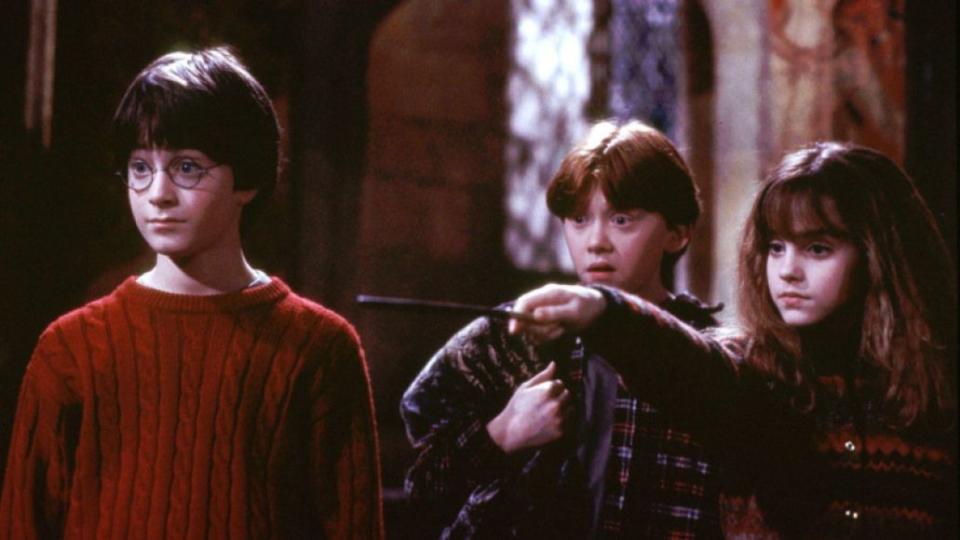
Harry Potter and the Sorcerer’s Stone
“It’s Levi-OH-sa, Not Levi-o-SAHH”: Though it would take some time for them to grow into more natural performers, the central trio in Sorcerer’s Stone show considerable charm from the get-go. Rupert Grint’s bug-eyed comic relief is a great counterpoint to Emma Watson’s know-it-all brattiness, each of them shoring up Radcliffe’s earnest stiffness to create a lovely triumvirate of young leads. They’d find stronger footing as the series went on, but their first work here is admirable given the massive production around them.
Nearly Aimless Chris: From Azkaban on, the Potter series would feel greater freedom to deviate from Rowling’s books a bit; Columbus’ first films, however, adapted their respective books almost word for word, right down to including more superfluous characters like John Cleese’s Nearly Headless Nick and Rik Mayall’s Peeves for virtually no reason. The result is pretty episodic kids’ fare, offering only mild glimpses of the more complicated, world-changing events to come in the series.
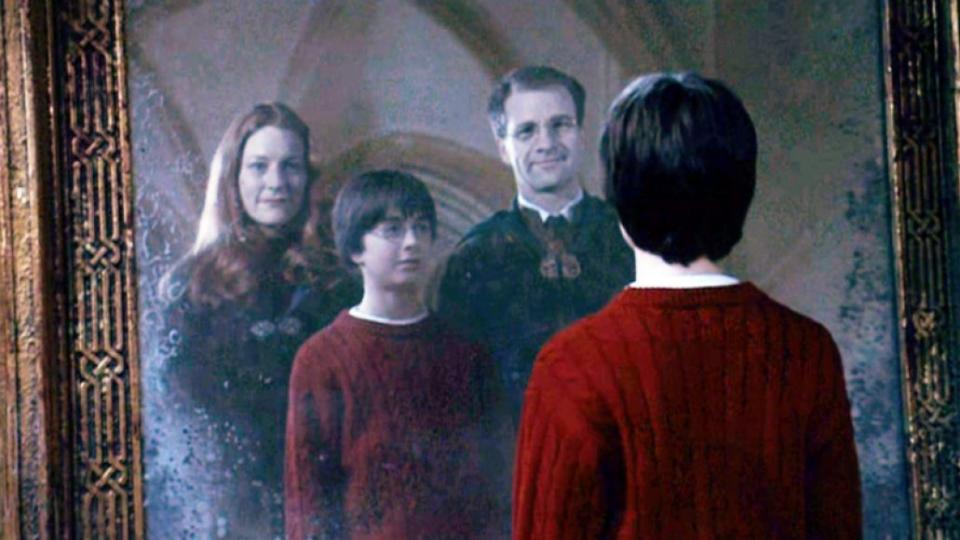
Harry Potter and the Sorcerer’s Stone
Expecto Verdict: Like with Chamber of Secrets, Sorcerer’s Stone has all the hallmarks of the early Columbus/Potter era – inoffensive kid-friendly adventure beats, bright colors, and a slavish adherence to every plot point of the book it’s adapting.
While the series itself obviously owes a lot to this first entry, it’s a flawed canvas upon which to build the rest of the cinematic Potterverse – the young leads are still finding their acting chops (particularly Radcliffe), the early-aughts CG doesn’t age very well, and the story feels more weightless than a ride on a Nimbus 2000. Still, the groundwork it laid for the films that followed, chiefly its cast and its Spielbergian sense of possibility, place it higher on this list than Columbus’ followup. — Clint Worthington
07. Harry Potter and the Deathly Hallows – Part 2 (2011)
Runtime: 2 hrs. 13 min.
Cast: Given that it’s a grand finale, virtually anybody who’s still alive at this point in the series returns for a curtain call at some point or another. The one new, key face: Kelly Macdonald as Rowena Ravenclaw, the Gray Lady.
Revelio Premise: Hogwarts is under siege, Voldemort has the Elder Wand, and despair has overcome the entire wizarding world. Yet as long as hope remains, there’s still a chance that darkness can be overcome yet. But as so many war stories go, victory on either side never comes without great sacrifice.
Artistic Pedigree: Yet again, it’s David Yates, who was well into his Potter tenure at this point. Some of the images he finds here, particularly during the true final battle, have become as synonymous with the look and feel of Potter as anything described in the novels. Even if, yes, Warner Bros. found another way to make all of their tentpoles as black-and-gray as possible.
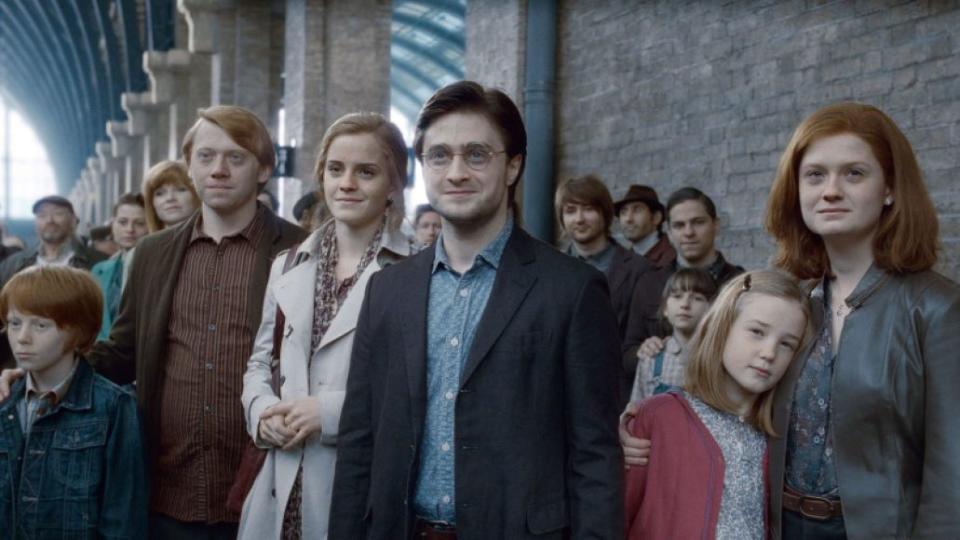
Harry Potter and the Deathly Hallows, Pt. 2
Put A Spell On You: Sometimes it’s the simple spell that ultimately wins the day. When faced with Voldemort’s killing blow, it’s a simple disarmament spell (“Expelliarmus!”) and a fateful combination of wand cores that evens the stakes. The image of the red and green spells colliding is among the most memorable in the entire onscreen series.
The Sound of Silence: Want to know just how essential that John Williams overture, “Hedwig’s Theme,” was to the success of these movies? Listen to how deeply unsettling it is when this film begins without it, the only one of the eight to do so. There’s an immediate, arresting sense that something deeply wrong is happening, because it absolutely is.
“Not my daughter, you bitch!”: We don’t really have a factoid for this entry, other than the fact that Julie Walters (the onscreen Molly Weasley) reportedly loved delivering it. But it’s one of the best-loved moments in any of the Potter books by many die-hards, and the movie is no different. Just try to watch Mrs. Weasley relentlessly dunk on Bellatrix Lestrange and not jump out of your seat with excitement.
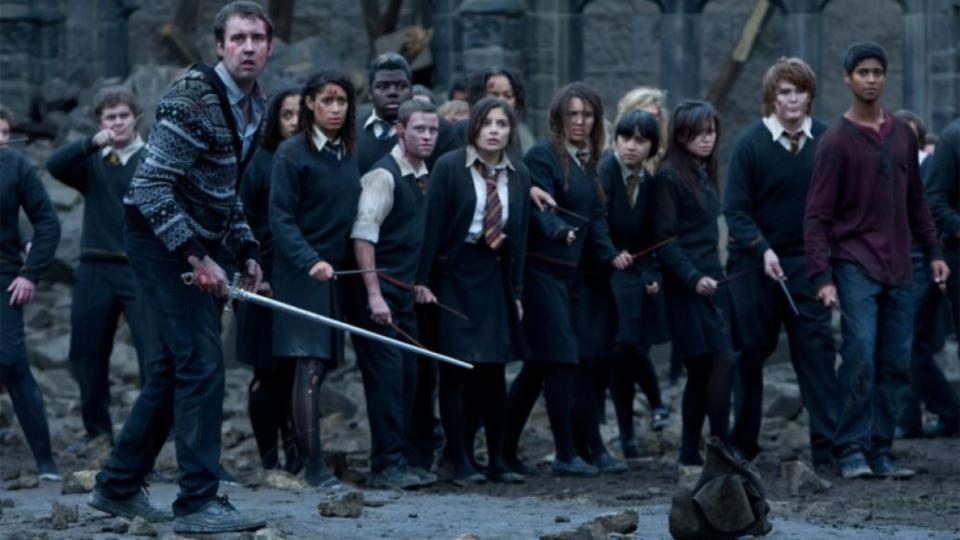
Harry Potter and the Deathly Hallows, Pt. 2
Expecto Verdict: Here’s the thing: as sheer payoff goes, Deathly Hallows – Part 2 delivers it and then some. Given the bifurcated structure, there isn’t a lot of movie to Part 2 in the strictest sense; this is all falling action, and as that’s concerned, David Yates and company do a largely excellent job of tying together every thread the films established up to that point. Some of the deaths which rang out so powerfully in the novel are given short shrift because of this necessity, but that’s what happens when you have to end a ten-year franchise in just over two hours.
Where Part 1 felt like a breath of fresh air for the series, a chance to do the kind of character-based storytelling that made the books so enduring, Part 2 is the big action finale a different kind of fan was waiting for. As such, it’s far more a finale for the film series’ admirers than people who’d already said goodbye to the wizarding world of the page a few years earlier. Yet even at its muddiest, Part 2 is still a moment frozen in time, a chance for would-be wizards and proud Muggles alike a chance to say farewell once more, for good this time, to a cast and a story that captured the global imagination for years on end. — D.S.M.
06. Harry Potter and the Half-Blood Prince (2009)
Runtime: 2 hrs. 34 min.
Cast: Jim Broadbent
Revelio Premise: Following the death of Sirius Black and the Ministry of Magic acknowledging Voldemort’s return, Harry, Ron and Hermione begin another year at Hogwarts. There, Harry finds a mysterious potions book annotated by “The Half-Blood Prince” that contains secret wizarding knowledge the other students lack. Meanwhile, he and Dumbledore begin searching for long-lost memories that might hold the key to Voldemort’s defeat, while Draco Malfoy begins his journey toward becoming a Death Eater.
Artistic Pedigree: Current Potter flag-bearer David Yates returns for his second turn as director, bringing more of the same grey, wearied atmosphere featured in Order of the Phoenix to Prince. Phoenix composer Nicholas Hooper also returned to score this one.
Put a Spell on You: Half-Blood Prince’s big magical moment comes near the end of the film, when a weakened Dumbledore performs a Firestorm spell to ward off the hordes of undead Inferi that attack him and Harry while searching for one of Voldemort’s Horcruxes. In an entry more concerned with intimate character moments and difficult choices, it’s a welcome bit of spectacle that also provides Dumbledore with one big hero moment before his eventual fall.
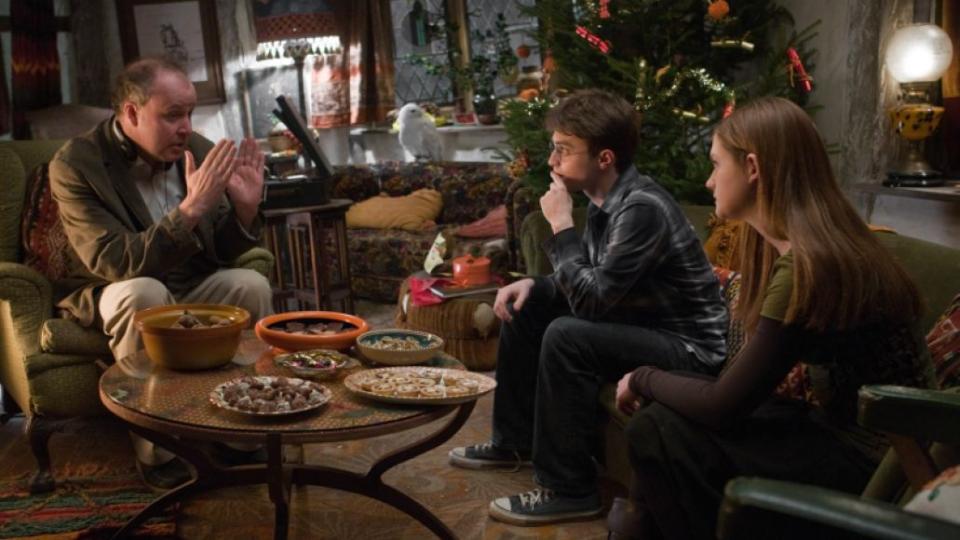
Harry Potter and the Half-Blood Prince
“She’s Got Nice Skin… As Far as Skin Goes”: While previous entries hinted at the core trio’s budding love lives (especially Goblet of Fire), they arguably get the most runtime here. Ron’s romantic triangle between Hermione and the ditzy Lavender Brown occupies most of his role in the story, as does Harry’s nascent crush on Ginny Weasley. It makes for a few entertaining scenes (like Ron accidentally eating the love potion-laced chocolates Romilda Vane sends to Harry), but ultimately clashes with the darker, more mature battle with Voldemort’s forces.
Draco Breaking My Heart: For the first few films, Tom Felton’s Draco Malfoy was simply the frustrated, flaxen-haired foil for Harry’s misadventures at Hogwarts. Half-Blood Prince, however, finally allows Felton to get a similar amount of meaty character work as his three do-gooder nemeses, as he takes his first furtive steps toward the dark side. Overcome with resentment at Potter’s accomplishments, and a sense of obligation to his shamed father, Draco’s villainy is given a far more tragic flavor – an impressionable boy driven to evil by the manipulators around him.
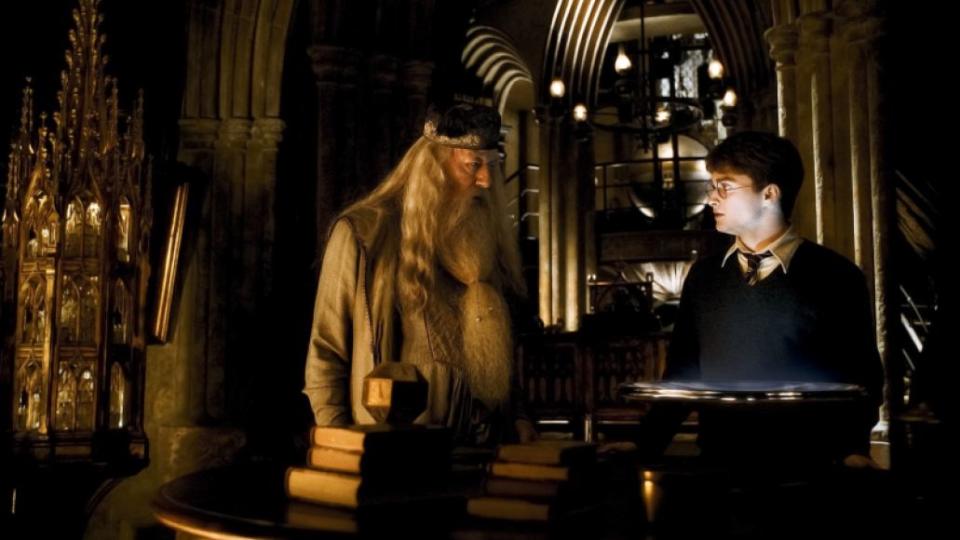
Harry Potter and the Half-Blood Prince
Expecto Verdict: Snape kills Dumbledore! Sure, a few other things happen in Harry Potter and the Half-Blood Prince, but the majority of this more sullen, downbeat entry in the series feels like it’s leading to that long-awaited moment. Apart from that, Half-Blood Prince is a dour affair, Yates’ follow-up to the exciting Order of the Phoenix essentially becoming a 150-minute filler episode in which we check in with our stressed heroes right before the big showdown.
The tension between Harry, Ron, and Hermione, now exacerbated by their years of fighting evil and the growing romances between Ron/Hermione and Harry/Ginny, takes center stage and fills up a lot of time in place of a gripping central mystery. While time is spent learning about Voldemort’s origins, as well as Draco’s compelling flirtation with the dark side, it all feels like so much thumb-twaddling until the Big Avada Kedavra Scene. It’s pretty conceptually daring to make a slow, somber Harry Potter movie, but the end result isn’t quite as compelling as the series’ high points. — C.W.
05. Fantastic Beasts and Where To Find Them (2016)
Runtime: 2 hrs. 13 min.
Cast: Eddie Redmayne, Katherine Waterston, Dan Fogler, Alison Sudol, Colin Farrell, Ezra Miller, Samantha Morton, Carmen Ejogo, and at the last second, Johnny Depp
Revelio Premise: In 1926, long before the days of Harry Potter and Voldemort, a young wizard arrives in a New York City that isn’t entirely welcoming to his kind. But Newt Scamander and his briefcase full of magical creatures are just passing through, on their way to far greater adventures. But when the magizoologist crosses paths with an ex-Auror, and they discover a dark presence tearing its way through the city, Newt is forced to become a different, more bashful kind of Wizarding World hero.
Artistic Pedigree: David Yates continues with his lengthy quest to chronicle every corner of the Rowling extended universe onscreen. Given a new series to work with, he retains some of the saturated darks and rubble grays favored by the later Potter installments, but cuts them with gorgeous swaths of color, most notably in the sequence where Newt finally introduces his allies (and the audience) to the inside of his suitcase.
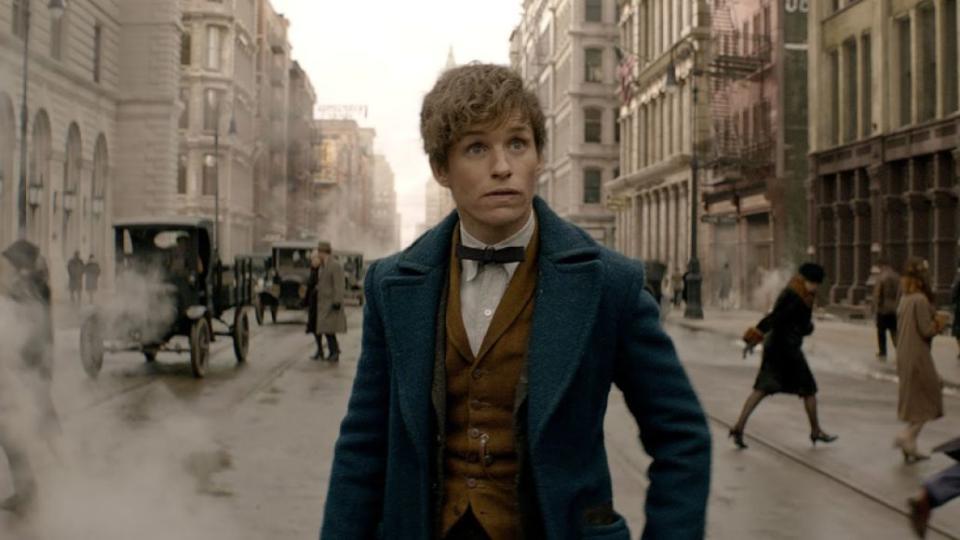
Fantastic Beasts and Where to Find Them
Put A Spell On You: The best scene in the movie, and arguably one of the better single scenes in any Potter-related movie, is the one in which Frank the thunderbird helps erase all of New York’s memories of the terrible destruction caused by Grindelwald. As the rain falls, the terror of things beyond our understanding washes away, and we all return to a slightly happier world. But with it, so go Jacob’s memories of his incredible adventure. (At least until the sequel.)
Keeper of the Great Secrets: While J.K. Rowling was actively involved with the production of all eight direct Potter adaptations, Fantastic Beasts marks the first time that Rowling also stepped in as screenwriter on one of the films. True to form, the film is awash with detail, and while its story is far simpler than most of the labyrinthe, mythology-heavy novels, Rowling brings an idealism back to the movies’ understanding of magic that was often washed away by the bleaker later installments. In short, the magic feels a little more magical this time around than some of the most despairing Potter films were able to manage, and Rowling is able to play with some interesting vintage corners of her world along the way.
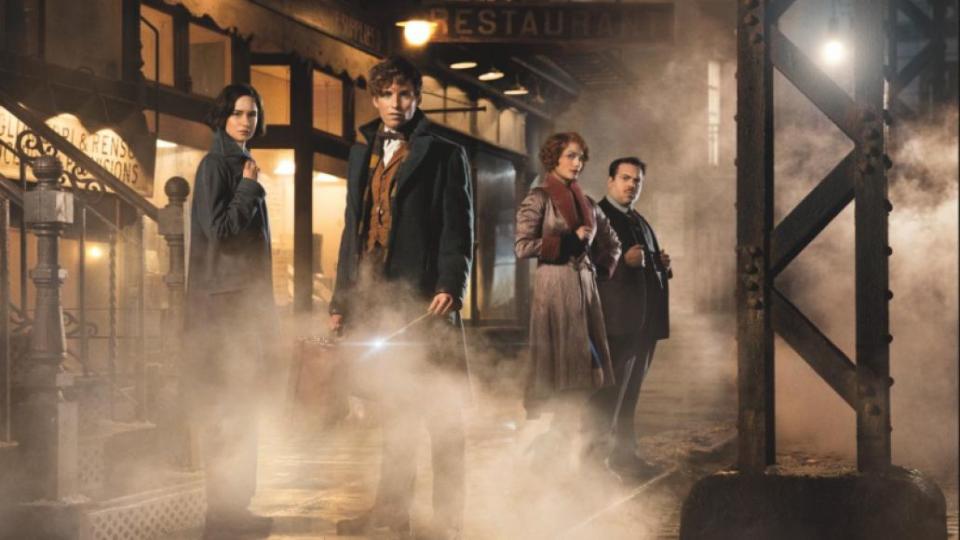
Fantastic Beasts and Where to Find Them
A World Beyond Our Sight: Allegedly, Eddie Redmayne was gifted with a lengthy backstory for Newt Scamander by Rowling herself, one only known to him. While this definitely invokes visions of the ending of Martyrs more than it should, it’s always fascinating to remember just how much more Rowling will always have in the tank when it comes to the Potterverse.
Expecto Verdict: While Fantastic Beasts feels much lower-stakes than the majority of the movies that preceded it, that’s perfectly okay (at least to a point). This first spin-off spends a fair deal of time establishing the new key players in its universe, but finds a lot of time for odd digressions that nicely match Newt’s boundless curiosity about the world.
In Jacob Kowalski, Rowling pens her most interesting Muggle yet, and Dan Fogler lends him the kind of mirth that the Potter books and movies alike start to scale back after Sorcerer’s Stone. In the tragic story of Credence (Ezra Miller), Rowling makes direct what was always humming beneath the novels: a world that resists acceptance is a world that creates its own demise.
With all of that said, however, Fantastic Beasts is also the ostensible beginning of a new billion-dollar cinematic universe, and there are points at which the film strains under the weight of its own grander economic responsibilities. Most of the least interesting stuff comes around when the film remembers that it has to lay the groundwork for a franchise, chiefly the bait-and-switch involving the upcoming Big Bad of the Beasts movies, and there are points when scenes feel less organic or engaging than simply obligatory.
But what Beasts lacks in graceful exposition, it more than covers with its overwhelming sense of hope. Even when jumping 70 years into the past, Rowling finds a way to tell stories of how the world will never improve if there aren’t people who believe it can be better. In its sweetly retro way, Fantastic Beasts and Where To Find Them asks people who already believe in wizards and magical creatures to believe in the endless possibilities they suggest once again. — D.S.M.
04. Harry Potter and the Order of the Phoenix (2007)
Runtime: 2 hrs. 22 min.
Cast: Some good additions to the grown-up roster in Natalia Tena (as Tonks) and in Helena Bonham Carter, who plays the terrifying Bellatrix Lestrange like a deranged, spitting cat (and yes, that is a compliment). But the real story here is Imelda Staunton, an insanely versatile performer who gives one of the best performances of the series as one of the great monsters in literature. There’s also Evanna Lynch, whose turn as the delightful Luna Lovegood is one of the strongest kid performances of which the series can boast.
Revelio Premise: When Harry Potter returns to Hogwarts, the carriages he once thought were horseless are now revealed to be pulled by thestrals — dark, skeletal winged horses that you can only see once you’ve witnessed death firsthand. That’s the place in which Order of the Phoenix, one of the gloomiest films in a series that’s not exactly cheery, lives.
Still reeling from the death of a friend for which he blames himself, Harry returns to the Wizarding World to find that he’s being called a liar, sometimes even a psychopath, and that the entire government is working to discredit him, even from within the school. Separated from his beloved but similarly troubled godfather (Gary Oldman as Sirius Black — more on him later), he’s forced to endure the abuse of the absolutely nefarious, pink-suited Dolores Umbridge (Staunton) while working to convince a world that now despises him of the danger that grows ever stronger — a danger that only the Order of the Phoenix seems willing to fight.
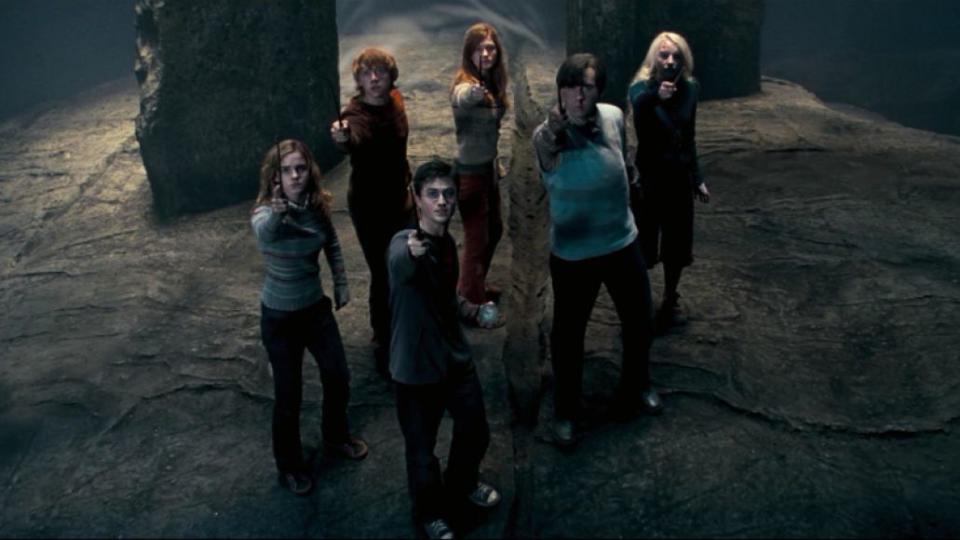
Harry Potter and the Order of the Phoenix
Artistic Pedigree: Imelda Staunton! Imelda Staunton. Imelda. Staunton. She does this thing where she giggles without moving her eyes or her mouth, a mechanical process that results in a girlish but inhuman sound. She basically plays Dolores Umbridge as Mary Poppins, if Mary Poppins were straight-up evil and totally devoid of anything resembling warmth or charm, and instead only knew how to pretend to have those things. It’s one of the best performances in the whole series, and the best part is that Dolores Umbridge is just the tip of the Staunton iceberg. Go see everything she’s ever done, immediately.
Put a Spell on You: As far as Potter setpieces go, it’s tough to top the Department of Mysteries. While not quite as wondrous and terrifying as the corresponding chapters in the books, Harry and company’s race through the bowels of the Ministry of Magic is utterly unforgettable, and its climactic final moments are as visually transfixing as they are emotionally weighty. Second place: Room of Requirement, you magnificent beast, how I love you.
“The emotional intelligence of a teaspoon”: One of the loveliest scenes in the series is a blink-and-you’ll-miss-it moment. After Harry tells his two best friends about his first snog, Hermione (Watson) and Ron (Grint) bicker, as they usually do. But then something marvelous happens: They all start to giggle. It’s so human, so honest, so teenaged. And it’s a moment which, reportedly, was unscripted, a testament to director David Yates’ knack for finding little ways to make sure his three heroes always felt like kids yanked out of childhood far too soon.
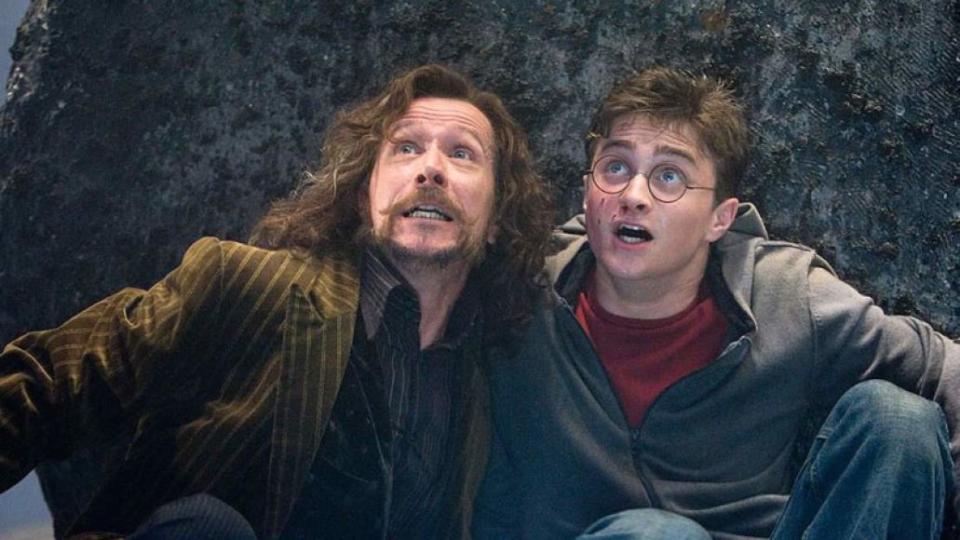
Harry Potter and the Order of the Phoenix
But on the other hand, David Yates, I will never forgive you for cutting Dobby out of this film: And yeah, it was probably to save money, but the great Toby Jones was sorely misused in Chamber and then vanished until the first Deathly Hallows. Unforgivable.
Expecto Verdict: There are plenty of Order of the Phoenix haters out there, but we are not among them. Yates’ first film as director was a sign of the very good things to come — despite some adaptation stumbles (in Half-Blood Prince) and one mess (Grindelwald), the Yates Potter era should be defined by his desire to make sure that these characters are always the first priority. You see that here in the delicate way he approaches the angry Harry, confused Ron, and concerned and frustrated Hermione. You see it in his gentle depiction of poor old Luna Lovegood and doomed Sirius Black.
And above all, you see it in Dolores Umbridge, because Yates and Staunton both understood that Rowling’s finest villain to date isn’t scary because of what she does. She’s scary because of what she represents — a “nice lady” fueled by racism and prejudice, whose ruthlessness is disguised by a pink bow and a smile, and who as a result is insidious in a way that none of Rowling’s other baddies (save, perhaps, the young Tom Riddle) could ever dream to be. — A.S.
03. Harry Potter and the Goblet of Fire (2005)
Cast: Brendan Gleeson, David Tennant, Robert Pattinson, Clemence Poesy, Predrag Bjelac, Frances de la Tour, Ralph Fiennes
Revelio Premise: For his fourth year at Hogwarts, Harry finds himself mysteriously chosen to participate in the Triwizard Tournament, an athletic competition between several major magic schools. As Harry works his way through the Tournament, he begins uncovering a plot to revive Lord Voldemort by the mysterious Death Eaters, evil wizards in league with Voldemort.
Artistic Pedigree: This film is the first and only entry directed by Mike Newell, who’d previously directed Four Weddings and a Funeral and Donnie Brasco before taking the job. Since then, he directed the Prince of Persia movie, as well as The Guernsey Literary and Potato Peel Society. He also brought on his house composer Patrick Doyle, who became the first to score a Harry Potter after John Williams stepped away.
Put a Spell on You: In Harry’s first real wizard’s duel with the resurrected Voldemort, the twin beams from their wands provides a suitable metaphor for their symbolic battle between good vs. evil (an image they’d return to in their final confrontation). Still, it’s a thrilling sight to see the two sides of this magical battle square off for the first time, especially when Harry is aided by the spirits of Voldemort’s victims, freed by his Expelliarmus charm.
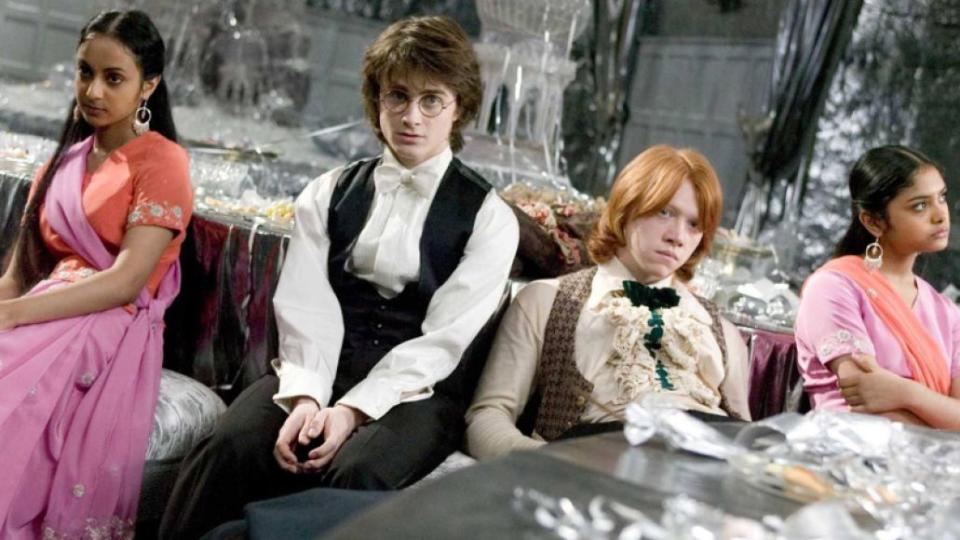
Harry Potter and the Goblet of Fire
Folliculus Engorgio: After Azkaban showed the production team that the audiences would embrace some aesthetic changes to the characters’ looks, Goblet of Fire would take it in some… bold directions. In the most 2004 move imaginable, Newell gave all the leads long, shoulder-length haircuts, huge departures from the more modest coifs of the first three. Harry’s rakishly shaggy ‘do was pretty great, but boy oh boy, Ron’s Farrah Fawcett locks were a CHOICE. We’re not saying that shorter haircuts went back in style the following year because of this movie, but we’re not not saying that either.
Team Cedric: Years on, it’s still jarring to see future Edward Cullen (and future future unconventional character actor) Robert Pattinson in a Harry Potter movie, especially when the goody-two-shoes Cedric Diggory exists mostly as a narrative cudgel to lend Harry’s first brush with Voldemort some stakes. Then again, both Pattinson and Radcliffe would go on to shake off their YA reputations in some extremely weird projects, so this entry is probably a fave for fans of both Swiss Army Man and Good Time.
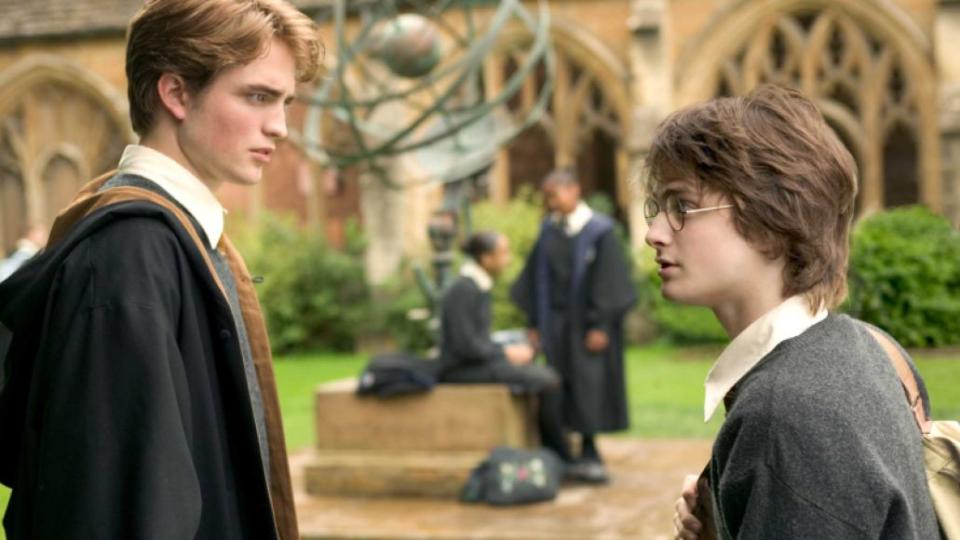
Harry Potter and the Goblet of Fire
Expecto Verdict: Harry Potter and the Prisoner of Azkaban was a tough act to follow, as evidenced by its high placement later in this list. However, Mike Newell’s follow-up managed to craft a decent adventure in its own right, miraculously toeing the line between Columbus’ bigger, broader impulses and Cuaron’s emotional maturity. Balancing the episodic thrills of the Triwizard Tournament with the kid wizards’ blossoming romantic lives and the looming threat of Voldemort is no easy task, but Newell juggles these elements easily enough.
The Tri-Wizard trials are the real standout, as is Harry’s first real showdown with the resurrected Lord Voldemort, Newell’s ability to stage an action scene his greatest asset in this particular entry. For most, it’ll be remembered as “the Harry Potter movie where Edward Cullen dies and everyone has big hair,” but as a middle chapter between Cuaron’s technical achievements and Yates’ grim maturity, Goblet of Fire stands tall as a solid ode to the series’ lingering sense of wonder at the world of magic. — C.W.
02. Harry Potter and the Prisoner of Azkaban (2004)
Runtime: 2 hrs. 22 min.
Cast: Gary Oldman, David Thewlis, Timothy Spall, Michael Gambon
Revelio Premise: Harry Potter returns to Hogwarts amid rumblings that Sirius Black, one of the most dangerous supporters of Lord Voldemort, has escaped from Azkaban Prison with designs on murdering him. In response, Hogwarts is guarded by the ghostly Dementors, seeking to capture Sirius. As the dangerous prisoner closes in on him, Harry attempts to learn more about their mysterious connection, and what it might have to do with new Defense Against the Dark Arts teacher Remus Lupin.
Artistic Pedigree: After two films with the kid-friendly Chris Columbus, Alfonso Cuarón was handed the reins to the series. While he’s a household name now with modern classics like Children of Men, Gravity and this year’s stunning Roma, he’d made the stellar Y tu Mama Tambien (and the admittedly more fitting A Little Princess) prior to this. (It’s admittedly fun to go back and watch the old Children of Men trailer, which proudly advertised itself as “from the director of Harry Potter and the Prisoner of Azkaban.”) He’d also oversee the last Potter film to be scored by John Williams.
Put a Spell on You: The Potterverse is filled with some magical creatures, but few get the kind of showcase Buckbeak the hippogriff receives early in Azkaban. When Buckbeak takes Harry on a scenic tour of Hogwarts, it’s an absolutely awe-inspiring sight, Cuarón pulling back his camera to see Buckbeak gliding low along the river behind Hogwarts, a terrified and excited Harry on his back. He’d flown plenty of times before in the series, whether on broomstick or in Ron’s flying car; here, though, Harry felt truly free.
Oldman’s Your Old Man: Up till this point, Gary Oldman was that scary, bug-eyed chameleon who graced the silver screen in baddie roles in any number of goofy Eurotrash action pictures, like Leon or The Fifth Element (as “Jean-Baptiste. Emmanuel. Zorg.”). His patented blend of wild-eyed shouting and that maliciously musical cadence made him perfect for unironic baddies, which made his casting as Sirius Black unexpectedly perfect. By the time Sirius is revealed to be a Good Dad Figure to Harry, Oldman gets to show a softer side to his performance that demonstrates his ability to play paternal as well as pathological.
It’s Your Kids, Harry!: One of the neater elements of Azkaban’s final act is its magical twist on Back to the Future Part II, in which Harry and Hermione use the Time Turner to save himself from the Dementors. It’s the kind of closed-loop time travel madness that would make Doctor Who proud, and feels genuinely novel in the world of wizards and magic.
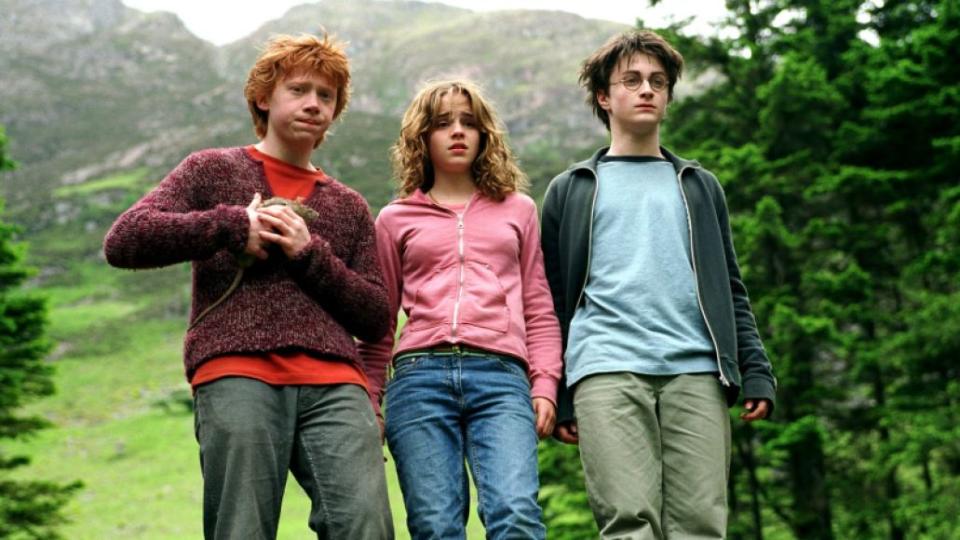
Harry Potter and the Prisoner of Azkaban
Expecto Verdict: The first two Potters were lightweight, magical family fare that sacrificed character development for surface-level fun and adventure. However, with the arrival of Cuarón, the series took a quantum leap forward in its maturity and willingness to deviate from the books for the sake of effective adaptation. The kids got to wear their own street clothes, the cinematography grew more stylish and experimental, and the storytelling more complex. The main cast stepped up their performances considerably; Radcliffe, in particular, leaned into the moodiness that would come from such a troubled wizard adolescence.
Azkaban showed that the series was willing to experiment, filling the director’s seat with one of modern cinema’s most innovative and emotionally gripping filmmakers. While Cuaron only directed the one Potter, he left an indelible mark on the series’ legacy that would absolutely follow through to David Yates’ work on the series and beyond. As with our young wizards, the Potter series grew up before its audience’s eyes, and Azkaban is that first, most important growth spurt in its development. — C.W.
01. Harry Potter and the Deathly Hallows – Part 1 (2010)
Runtime: 2 hrs. 26 min.
Cast: At this point, we’ve met nearly everybody, but there are still a few notable additions. First, Bill Nighy appears as Rufus Scrimgeour, and his very intense gaze is the first shot of the whole damn film. A short performance—two scenes—but an excellent one. Rhys Ifans sets the tone for one of the tensest scenes in the franchise as poor, tormented Xenophilius Lovegood. British theatrical giant Simon McBurney takes over as Kreacher in one of the best casting course-corrections ever. And showing up far later than he does in the novels is Bill Weasley, played by Domhnall Gleeson.
Revelio Premise: The war has well and truly started, and the side of good is losing. While their classmates head back to Hogwarts — now under Ministry, and thus Death Eater, control — Harry, Ron, and Hermione begin to cut the cords that separate them to their lives and head out to achieve what they know to be close to impossible. And that’s where they live from then on.
As storm clouds gather, metaphorically and sometimes literally, they start on a wild goose chase, hunting the artifacts that tether Voldemort to earth so he can finally be finished, if such a thing is even possible. And as hopeless quests are wont to do, this one takes its toll, costing them health, happiness, friendship, safety, and the lives of those they love.
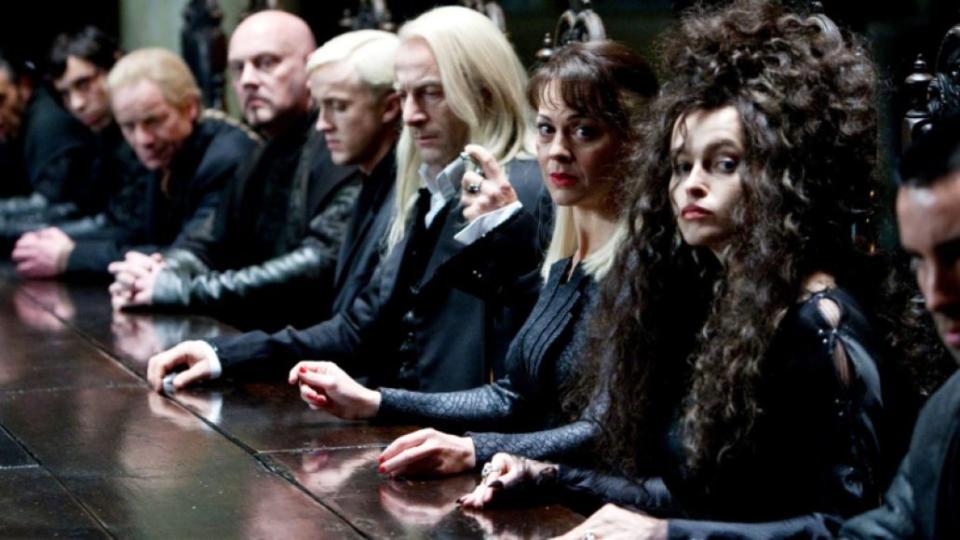
Harry Potter and the Deathly Hallows Pt. 1
Artistic Pedigree: We’ve covered a lot of movies in this list, and a lot of actors, so let’s spare a moment for the three that tied it all together. No one would argue that Emma Watson, Rupert Grint, and Daniel Radcliffe were world-class thespians right out of the gate. They were well-cast, but not prodigies.
By the time the first Hallows rolls around, however, they’ve grown — as people, as artists, and most crucially, as these characters. If anyone ever tries to tell you these people can’t act, show them Ron and Harry’s (seemingly) friendship-ending fight. Show them Harry and Hermione dancing in their lonely tent. Show them Hermione erasing her parents’ memories, and Ron trying to destroy that Horcrux. They’re no Dames Maggie Smith, but all three of them have got the stuff — ånd it’s this film, more than any other, that proves it.
Put A Spell On You: This is the single most magical thing in the whole goddamned franchise, don’t @ me. This could be the only good scene in the whole movie and it would still make Hallows I a top-five contender.
If you go into the comments and say this is a movie where nothing happens, I will jinx your fingers together: When it was announced that Deathly Hallows would be split into two films, a bunch of very wrong people groused that it was just a cash grab intended to drag out a franchise on its last legs. The result was something else entirely. In splitting the enormous final book in two, Yates and screenwriter Steve Kloves had the luxury, for the only time in the franchise, to let these people be as complicated and messy as they were on the page. It’s not a race to the last page, sacrificing every moment of mood and character development at the altar of plot. It’s a road movie, and a very good one.
On an impossible quest, there’d naturally be a lot of sitting around and trying to figure out what the hell to do. There’d be grief, and anger, and jokes in the grief and anger. In order for the losses and successes to really hit, there’s got to be plenty of between, and at long last, Deathly Hallows has both. It’s moody and moving, thrilling and filled with life. Get out of here with your ‘nothing happens’ trash. What movie were you watching?
It’s also a heist movie: And a horror movie, and a drama, and a war movie, and a thriller, and a mystery, and at one point George Weasley (Oliver Phelps) walks into the kitchen where Harry and Ginny (Bonnie Wright) are doing a little sad making-out, and he leans against the counter with a cup of coffee to watch them, with a toothbrush sticking out of where his ear used to be. This is a great movie.
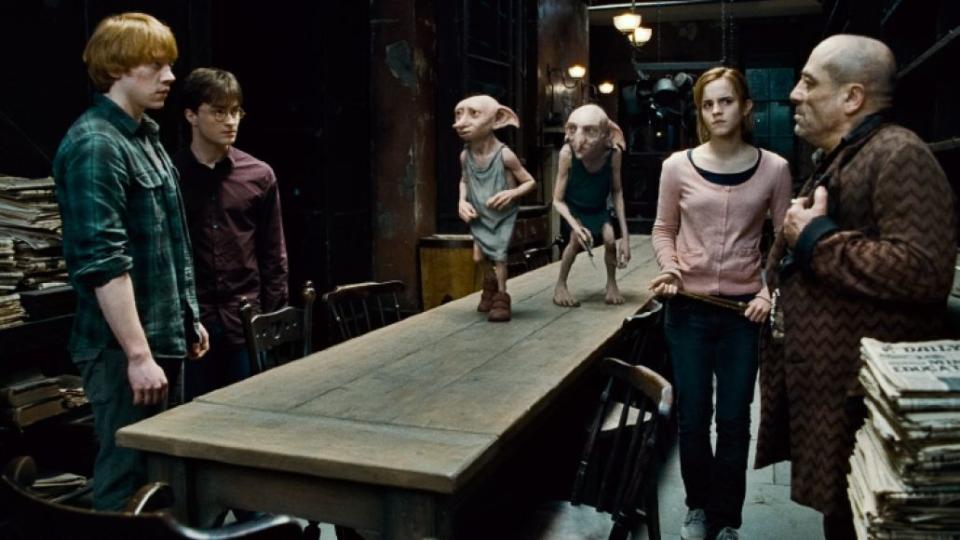
Harry Potter and the Deathly Hallows, Pt. 1
Expecto Verdict: The best Wizarding World movie so far (and, let’s face it, probably ever) only seems like it’s all middle. So did The Two Towers; so did The Empire Strikes Back. Yes, there’s more story to come and loads before, but all that middle contains the most thoughtful storytelling, careful world building, and satisfying, complex character storytelling in the whole damn series, all building to a climax centered on one of the purest, most shattering heartbreaks Rowling will ever write.
It’s not perfect, but it’s as close to perfect as we’re likely to get. It’s haunting, and lovely, and painfully human. Like Hermione’s tiny beaded bag, it may seem simple, but it’s enormous on the inside, and contains more important, useful, wonderful stuff than one could possibly imagine. — A.S.
Every Harry Potter Movie Ranked From Worst to Best
Dominick Suzanne-Mayer, Allison Shoemaker and Clint Worthington
Popular Posts
Synth repairman accidentally gets high after touching old LSD on a vintage '60s synthesizer
Henry Rollins On Retiring From Music: "There's No More Toothpaste In the Tube"
Dr. Dre's Divorce Finalized, Nicole Young Awarded More Than 20% of His Net Worth
Tom Holland Claps Back at Martin Scorsese's Criticism of Marvel Movies
Alice Cooper Set Money Aside for His Crew When Pandemic Started

